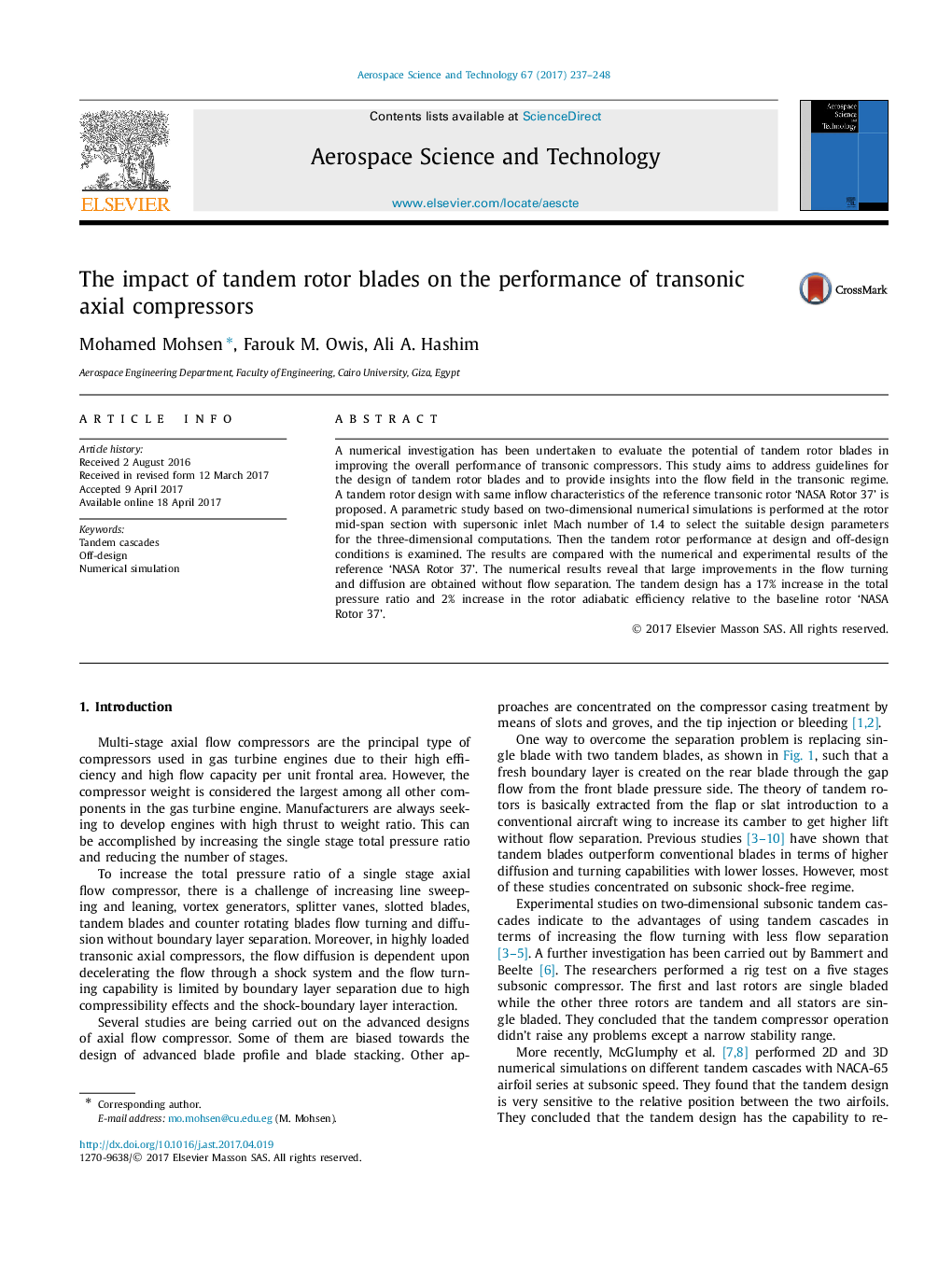| Article ID | Journal | Published Year | Pages | File Type |
|---|---|---|---|---|
| 5472805 | Aerospace Science and Technology | 2017 | 12 Pages |
Abstract
A numerical investigation has been undertaken to evaluate the potential of tandem rotor blades in improving the overall performance of transonic compressors. This study aims to address guidelines for the design of tandem rotor blades and to provide insights into the flow field in the transonic regime. A tandem rotor design with same inflow characteristics of the reference transonic rotor 'NASA Rotor 37' is proposed. A parametric study based on two-dimensional numerical simulations is performed at the rotor mid-span section with supersonic inlet Mach number of 1.4 to select the suitable design parameters for the three-dimensional computations. Then the tandem rotor performance at design and off-design conditions is examined. The results are compared with the numerical and experimental results of the reference 'NASA Rotor 37'. The numerical results reveal that large improvements in the flow turning and diffusion are obtained without flow separation. The tandem design has a 17% increase in the total pressure ratio and 2% increase in the rotor adiabatic efficiency relative to the baseline rotor 'NASA Rotor 37'.
Keywords
Related Topics
Physical Sciences and Engineering
Engineering
Aerospace Engineering
Authors
Mohamed Mohsen, Farouk M. Owis, Ali A. Hashim,
